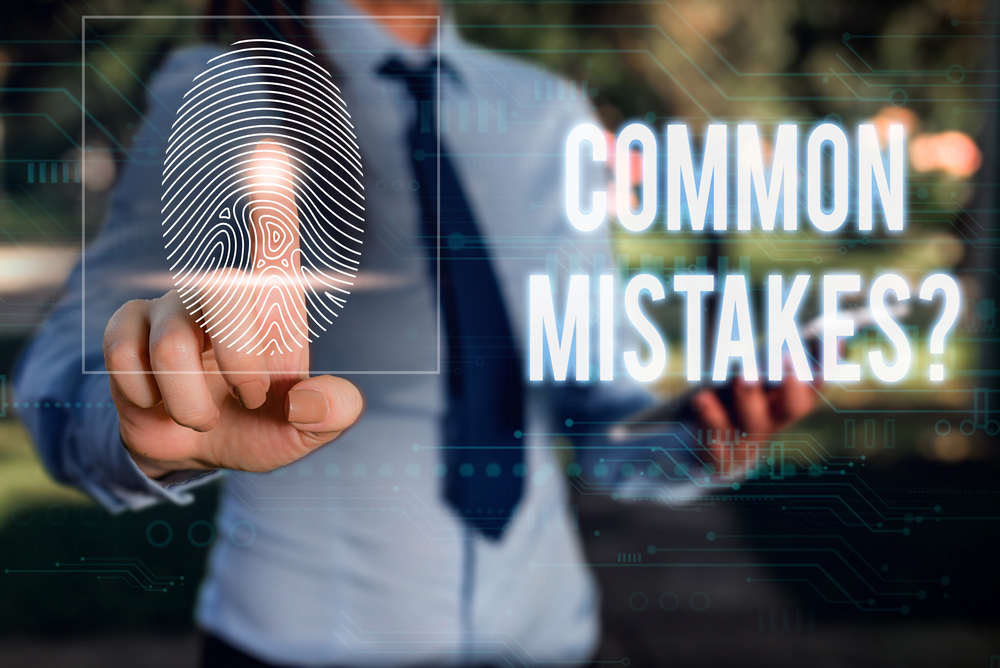Five Common Mistakes to Avoid when Registering Your First Trademark
According to the U.S. Patent and Trademark Office (USPTO), “A trademark can be any word, phrase, symbol, design, or a combination of these things that identifies your goods or services.” Though ‘trademark’ can be used for both, it’s good to know that there are actually two kinds of marks – a trademark, which is used for goods, and a service mark, which is used for services. Here we look at mistakes to avoid when getting your first trademark.
A trademark is what differentiates you from the crowd. It allows your customers to recognize and bond with your product or service. It also protects you. Many people believe that trademarking something makes it illegal for anyone else to use it. While that’s not true, it is true that no one can use your trademark the same way you are. If you trademark a logo for your ice cream business, no one else can use that logo for an ice cream business.
Though you can begin using your trademark whenever you’d like, your rights to that trademark are significantly limited until you register your trademark. That doesn’t mean to hurry up and register, however. There are many mistakes that can be made in the process of registering your first trademark – mistakes you’re sure to want to avoid. These are the five biggest ones:
Not Doing Your Research
It may seem like common sense, but not everyone thinks to do some leg work before diving into the trademark process. The whole point of a trademark is to keep your intellectual property safe, but you might not be the first to think up your idea. It’s a good idea to do a preliminary search through trademark registries to make sure there isn’t already a trademark in place on the thing you’re hoping to trademark yourself. There are multiple registries, some domestic and some international, so you’ll want to make sure you’re using the one that is right for you. It doesn’t hurt to search the internet as well, just to see what comes up when you put in your idea. No one wants to jump into a trademark suit – especially when you’re not the one who trademarked first. To avoid any possible legal ramifications, it really is smart to do your research before submitting any sort of application for your trademark. Plus, if the trademark is already in use, your application will be rejected anyway.
Registering your Trademark in the Wrong Class
Something not many people understand is that trademarks are actually put into categories or “classes” by the USPTO. As of 2022, there are 45 classes, divided into two main sections: Goods and Services. They range from chemical products to computer software, from medical instruments to jewelry, from education to restaurants, and so much more. The USPTO has all the information needed to figure out your trademark’s class on their website, https://www.uspto.
There are cases when a product or service will fall under more than one class. This is no cause to be alarmed. Trademarks are allowed to exist in more than one class. The person registering will just need to pay extra fees and make sure the trademark is registered in each of the classes.
Choosing the Wrong Trademark
You might think there is no wrong choice for a trademark, but there are a lot of factors that should go into your decision. One thing you should try to avoid is descriptive trademarks. Not only do they come off as generic, but they also confine you and your ideas. For example, using the word HIKING when trademarking your product or service limits your future endeavors. What if you want to branch out to other activities like fishing or organized sports?Sure, people might still check you out since they all fall under a similar umbrella, but you won’t get the traffic you desire for your extra ideas with a name that’s limited to where you were at the start. Another good reason to keep specifics out of your trademark is that trademark offices can actually reject trademarks that contain certain descriptive words.
Not Using a Trademark Specialist
It can be tempting to save money and skip the specialist, but you should really reconsider. Trademark laws vary by country and region, and regulations and standard practices vary with them. There are also many nuances involved in trademarking that only an expert can pinpoint and help navigate around. This is especially true if your trademark situation is complicated by outside factors.
The help with the application alone can make a trademark specialist worth the extra money. Many people seem to think the trademark application is simple, but it’s not rare for individuals to make mistakes. When mistakes are made on trademark applications, usually the application is refused outright with no refund of your application fees. If it’s not refused outright, you’ll be issued an Office Action by the Examining Attorney. You’ll need to submit a thorough and timely response if you hope to continue your application. In some cases, you’ll need to go further and create a strong legal argument. In this process, most people find they need legal help anyway. If you choose to use a specialist upfront, you’ll save yourself time, money, and headaches.
Letting your Trademark Lapse
After going through the hard work of deciding on a trademark, researching, finding the proper class, and applying, you finally got your trademark. Woohoo! You’re done, right?
Wrong.
One of the biggest mistakes you can avoid is getting lazy after their trademark has been approved. Trademarks only last as long as they’re being maintained. If you don’t keep up with filing requirements and fees over the years, your trademark will be seen as abandoned. All of your hard work not only goes down the drain then, but someone else can grab it while it’s free.
For any of your trademark services needs, contact us today.

